#algernon talmage
Explore tagged Tumblr posts
Text

The Founding of Australia 1788 by Algernon Talmage
#algernon talmage#art#australia#sydney cove#founding#australian#british empire#english#british#england#great britain#arthur phillip#settlement#history#flag#flags#union jack#convict settlement#age of sail#age of exploration#age of discovery#captain arthur phillip#ships#ship#pacific
74 notes
·
View notes
Link
Algernon Talmage to postać, której życie i twórczość wzbogaciły brytyjską scenę artystyczną. Od zawiązania szkoły St Ives po monumentalne prace historyczne, jego dzieła odzwierciedlają okres przełomu i transformacji artystycznej. Przekazywał również swoją pasję w Royal Academy Schools, wychowując nowe pokolenia artystów. #sztuka #malarstwo #AlgernonTalmage
0 notes
Text
Hilda Fearon (1878-1917) pintora, dibujante yescultora británica.
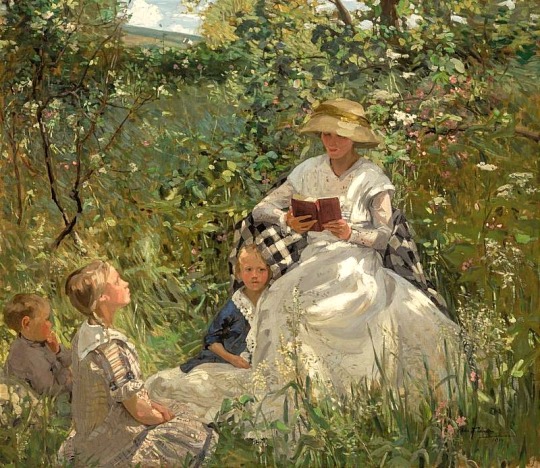
Nació en Banstead, Surrey. Sus padres fueron Paul Bradshaw Fearon, un rico comerciante de vinos, y Edith Jane Diffield Fearon. El matrimonio Fearon tuvo dos hijos y cuatro hijas. Una de las hermanas de Hilda, mayor a ella en un año, fue la destacada pintora Annie Fearon Walke.

Hilda comenzó a dibujar y modelar mientras todavía estaba en la escuela, y dibujó esculturas griegas en el Museo Británico.

Hilda estudió en la Slade School of London y continuó los estudios, junto a su hermana Annie, en Dresde, Alemania, donde fue alumna de Robert Sterl.
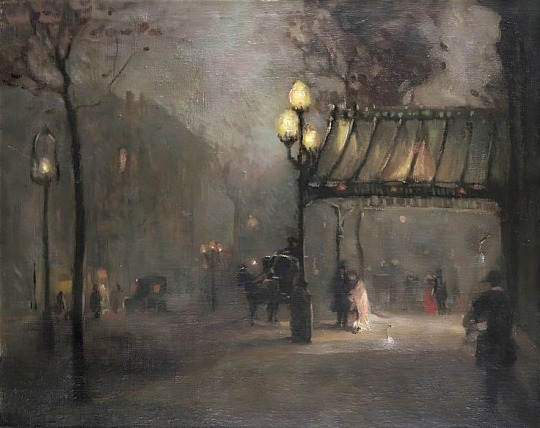
Después, ambas se trasladaron a Cornualles, al regresar a Inglaterra, y realizó estudios con el pintor impresionista Algernon Mayow Talmage, en St Ives, Cornualles, con el que inició una relación sentimental. Él estaba separado y nunca se llegó a casar con Hilda.

Allí Hilda y su compañera de estudios, Emily Carr, contrataban a pescadores y niños locales para que los dibujaran por la noche y en días de mal tiempo.
Talmage, era siete años mayor que ella. Ambos se trasladaron a Londres, en 1908, y se mantuvieron juntos hasta la muerte de Hilda.

Sus pinturas de escenas de género tienen como protagonista a mujeres, que suelen estar en compañía de niños, y ubicadas en interiores o en paisajes combinados con las figuras. También pintó paisajes, pero son sus escenas, en un estilo impresionista inglés, lo más destacado de su obra. La fiesta del té (Tea party), de 1916, propiedad del Tate, es una de las pinturas que mejor la caracterizan.

Murió en Londres a la edad de treinta y nueve años.
Su obra está incluida en las colecciones de la Tate Gallery de Londres, y de la Art Gallery of South Australia.
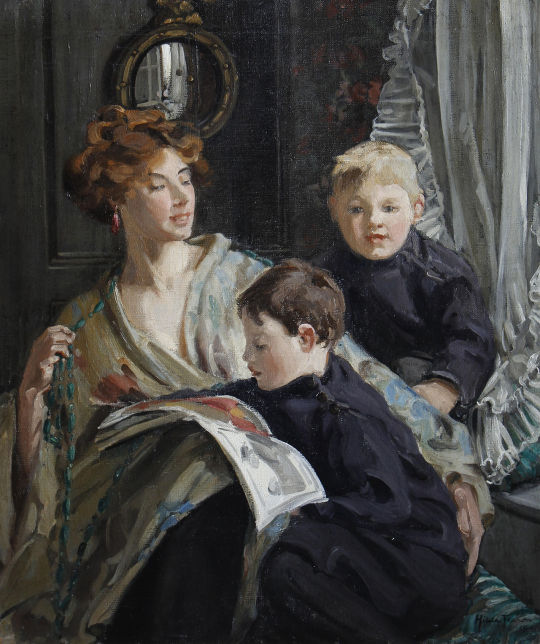
0 notes
Text
The Lake District Vintage British Railway Poster, London Midland and Scottish Railways Tourism
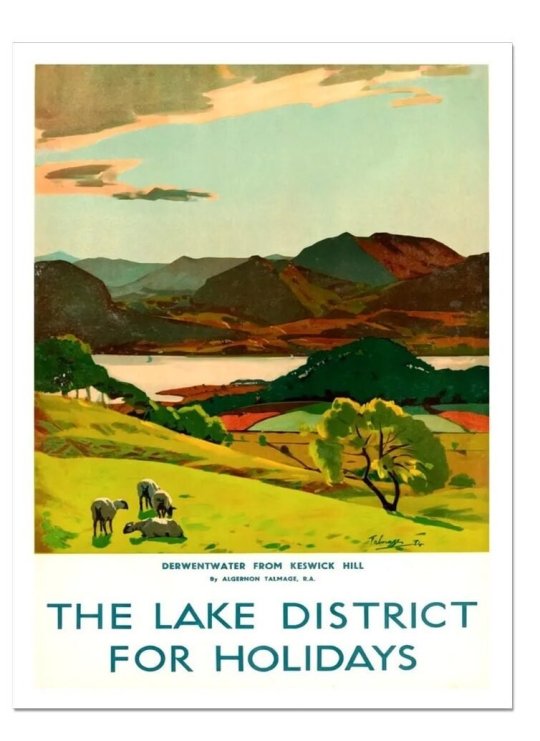
The Lake District Vintage British Railway Poster, London Midland and Scottish Railways Tourism The Lake District For Holidays, vintage British tourism poster, Derwent water from Keswick Hill. This vintage poster is advertising tourism and travel, for the Keswick - London Midland and Scottish railways, in the Lake District area of Britain. It features an illustration orginally by Algernon Talmage in 1934, Derwentwater from Keswick Hill. The poster has been carefully digitally restored by an artist remove any major signs of wear and tear and to refresh the original colours, retaining the vintage character of the poster. COPYRIGHT: For personal use only. You should not physically resell or digitally redistribute the artworks as originals nor as modified. WHAT YOU WILL GET You will receive a link to enable you to download a file with different ratio JPEG files. Each ratio file has high resolution JPEG images of at least 400 dpi which are ready for instant download and printing. Your link will expire in 14 days and you will be able to download the files 3 times. A 4×5 ratio file for printing 4″x5″, 8″x10″, 16″x20″, 40x50cm. A 3×4 ratio file for printing 6″x8″, 9″x12″, 12″x16″, 18″x24″. A 2×3 ratio file for printing 4″x6″, 6″x9″, 8″x12″, 10″x15″, 12″x18″, 16″x24″, 20″x30″, 24″x36″. An international paper size file for printing 5″x7″, A5, A4, A3, A2, A1, 50x70cm. A file for printing 11″x14″. Read the full article
0 notes
Text

Afternoon in the Norfolk Meadows. Algernon Talmage (1871-1939)
via
650 notes
·
View notes
Photo
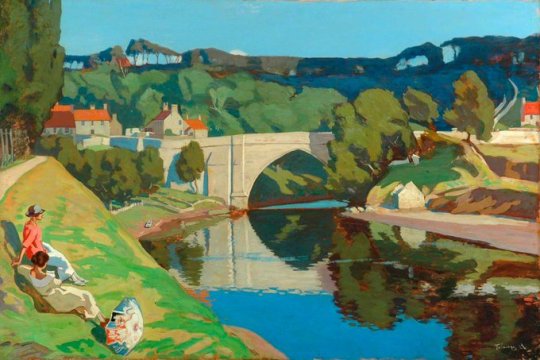
Algernon Talmage [1871–1939]
Aberdeen: Brig O'Balgownie [1924]
26 notes
·
View notes
Photo

River Bank - Algernon Talmage
65 notes
·
View notes
Photo

Vintage travel poster of the Brig o’ Balgownie, Aberdeen, Scotland, for the London, Midland & Scottish railway (LMS) ca. 1924. Artwork by Algernon Talmage (1871-1939).
#brig o' balgownie#aberdeen#scotland#river don#don#lms#algernon talmage#vintage poster#travel poster#railway poster#vintage railway poster#vintage travel poster
21 notes
·
View notes
Text
The mirror not yet crack'd
The mirror not yet crack’d

A woman stands in front of an oval mirror. She is seeing if a shawl she is trying on suits her. She has been standing there for more than a century — since 1910 in fact. And I too have stood for a long time looking at her looking at the looking glass, in which I wasn’t reflected.
The Mackerel Shawlwas painted by Algernon Talmage (1871–1939) and has been hanging in Bristol Museum & Art Gallery…
View On WordPress
#Alfred Lord Tennyson#Algernon Talmage#Bristol Museum and Art Gallery#painting#The Lady of Shalott#The Mackerel Shawl#William Holman Hunt
1 note
·
View note
Text
Algernon Mayow Talmage (23 February 1871– 14 September 1939) RA ROI was a minor British Impressionist painter.
He moved to St Ives, Cornwall, where he joined the St Ives School. During his time in Cornwall Talmage founded an artists club which was greatly influenced by the Cornish coastline, Talmage's time in Cornwall was significant in establishing his characteristic mellow palette and enchanting use of light.
The St Ives School refers to a group of artists living and working in the Cornish town of St Ives. The term is often used to refer to the 20th century groups which sprung up after the First World War around such artists as Borlase Smart, however there was considerable artistic activity there from the late 19th Century onwards.
The town became a magnet for artists following the extension to west Cornwall of the Great Western Railway in 1877. Painter James McNeill Whistler and his pupils, Walter Sickert and Mortimer Mempes, arrived in 1884, and spent the winter in the town. The Sloop Inn in St Ives, located on the wharf, was the favourite haunt of Victorian artists including Louis Grier. Many of his paintings hung there in earlier years.
Albert Julius Olsson and Louis Grier opened the town's first art school in 1888, and were later joined by Algernon Talmage. Talmage lived and worked in his studio (then called 'The Cabin', located on Westcotts Quay, St Ives). John Noble Barlow settled in St Ives in 1892, although later, he had a studio in the Lamorna Valley, Cornwall. Thomas Millie Dow moved with his family to St Ives in 1894, where Dow joined his friends and fellow painters Louis Grier and Lowell Dyer as members of the St Ives Art Club.
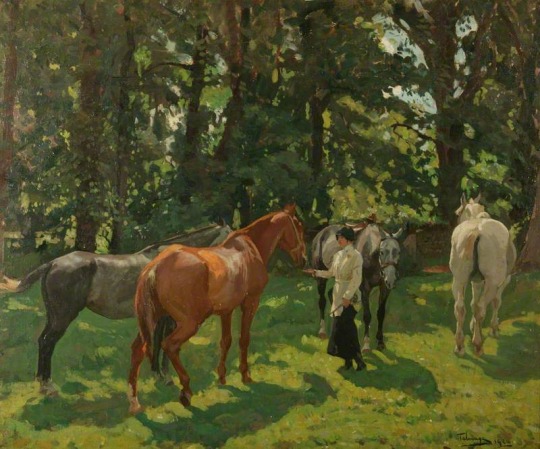
The Old Hunter. 1924
Algernon Talmage (1871–1939)
Manchester Art Gallery
32 notes
·
View notes
Photo
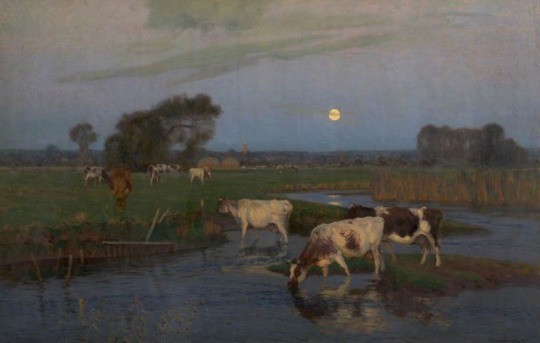
Algernon Talmage (1871 -1939) - The Ford. Oil on canvas.
606 notes
·
View notes
Photo

Algernon Talmage The Mackerel Shawl, 1910
123 notes
·
View notes
Photo
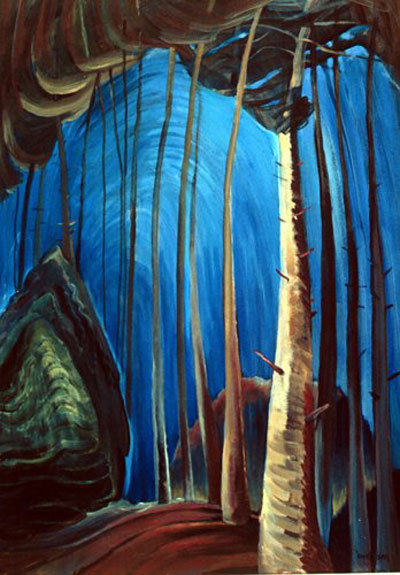







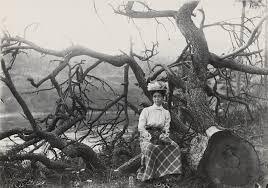
Emily Carr was born in Victoria, British Columbia in 1871. Her inclination to art was duly encouraged by her father, Richard Carr, a wholesale merchant. After the death of both her parents in 1890, she started to pursue art seriously, and studied at the San Francisco Art Institute for two years. At the age of 26, Carr visited a small village near Ucluelet located on the western coast of the Vancouver Island. There she sketched the lives of the Nootka people, indigenous to the land. Her interest in the lifestyle of Indian people was promoted by her trip to Alaska, where she spent days sketching the daily activities of the villagers.
In 1899, Carr went to the UK to study at the Westminster School of Art in London. In England she befriended and worked with Julius Olsson and Algernon Talmage, artists of the St. Ives School. By the time she returned to Canada, Carr established herself as a professional artist. She worked as a teacher at the Ladies Art Club in Vancouver, where she was highly unpopular among the students due to her smoking habits and cursing, that eventually led her to resign from her job.
After her tryst with many Indian villages in the Queen Charlotte Islands and the Upper Skeena River, Carr once again went to Europe in 1910, to study at the Académie Colarossi in Paris. She also took private lessons from Harry Phelan Gibb who influenced her palette adding there more vibrant colors. She was also influenced by French Post-Impressionism and Fauvism, and, after returning back to Canada in 1912, she exhibited 70 oils and watercolors of her “french period”, showing those influences. However, her bold new style was not appreciated by Canadians.
During the next 15 years, Carr did not paint much. She run a boarding house, took a short-story writing course, and spent some time in San Francisco doing different jobs, like painting decorations for the St. Francis Hotel and drawing cartoons for Western Woman’s Weekly. In 1927 Carr attended an exhibition of West Coast Aboriginal art in National Gallery of Canada. There she met Lawren Harris and other members of the Group of Seven, the most recognized modern painters in Canada at that time. Their distinctively Canadian art impressed her greatly, and triggered the most prolific period of her creative career. Throughout the decade, she mastered the scenes from the daily lives, traditions and culture of the indigenous Americans. With Lawren Harris as her mentor, Carr began to paint bold, almost hallucinatory canvases with which many people identify her - paintings of Aboriginal totem poles set in deep forest locations or the sites of abandoned Indigenous villages.
After a year or two Carr left Aboriginal subjects to devote herself to nature themes. From 1928 on, critical recognition and exposure in exhibitions of more than regional significance, like the National Gallery of Canada and the American Federation of Artists in Washington, D.C., began to come her way. There was even the occasional sale, though never enough to improve her financial situation. In full mastery of her talents and with deepening vision, she continued to produce a great body of paintings freely expressive of the large rhythms of Western forests, driftwood-tossed beaches and expansive skies, like Indian Church (1929), Loggers’ Culls (1935), and Heart of the Forest (1935).
In 1937, Carr suffered her first heart attack, which marked the beginning of a decline in her health and a lessening of the energy required for painting. Artworks from her last decade, like Odds and Ends (1939), reveal her growing anxiety about the environmental impact of industry on British Columbia's landscape and on the lives of Indigenous people. Carr died in 1945 of a heart attack. More than half a century after her death, she has become a Canadian icon. Her long preoccupation with the Indigenous culture of the Canadian west coast coincided with the beginnings of a rising tide of awareness and confident self-identification on the part of Aboriginal people who had for some time been considered part of a moribund culture. In the same way, her passionate involvement with nature and its portrayal coincided with a growing popular awareness of environmental issues and an accompanying sense of loss associated with the disappearance of "nature" in our own day. And the fact that she was a woman fighting the overwhelming obstacles that faced women of her day to become an artist of stunning originality and strength has made her a favorite of the women's movement.
10 notes
·
View notes
Text
Algernon Mayow Talmage (23 February 1871– 14 September 1939) RA ROI was a minor British Impressionist painter.
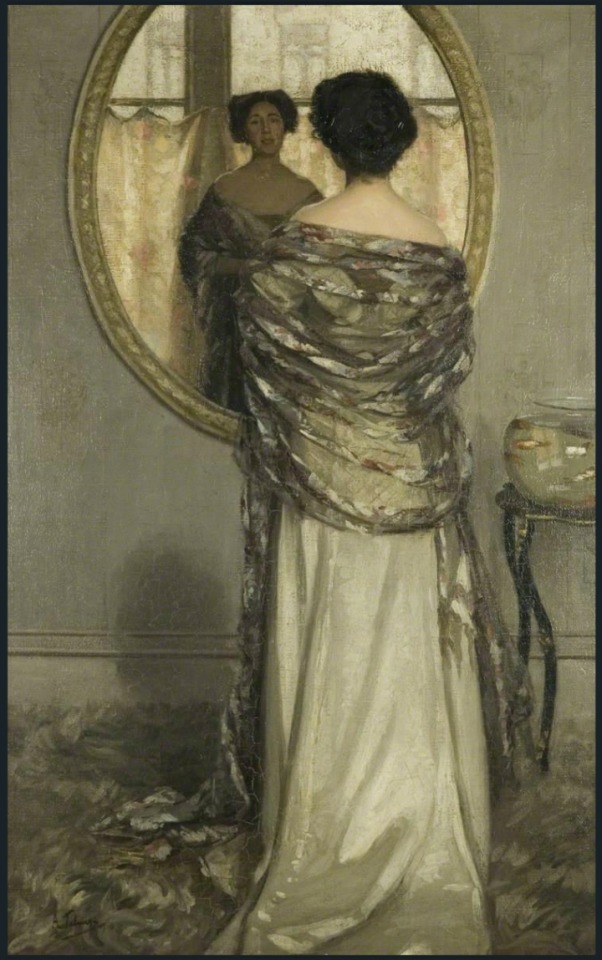
Algernon Talmage
Lo scialle dello sgombero
31 notes
·
View notes
Photo
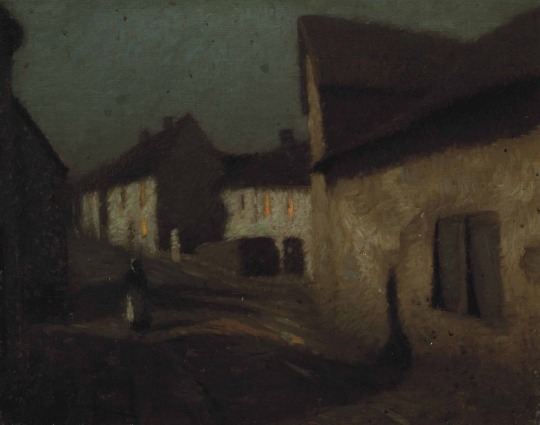
Algernon Mayow Talmage (1871 – 1939)
Figure on a village street at dusk, 1906
5 notes
·
View notes
Text

The Ford. Algernon Talmage (1871-1939)
via
282 notes
·
View notes